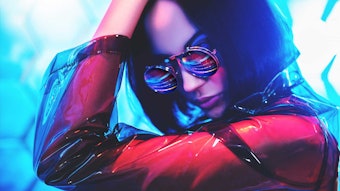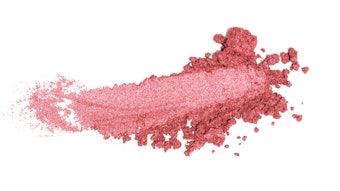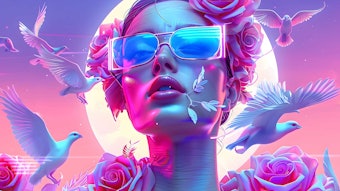The Evolution of Blush
Some say the use of blush and rouge began in ancient Roman society, where women rubbed rouge onto their cheeks. This practice progressed with the Persians who used henna; through the Middle Ages when women bled themselves and smudged it on their cheeks; to the Victorian age when crushed beets and strawberries were used, or women pinched their cheeks—all to achieve a healthy glow.
The category, of course, has evolved to a more sophisticated use of color that involves pigment, chemistry and now biology. New to the market are blushes that use the skin’s chemistry to help the products achieve a natural flush—essentially, blush has become smarter.
Smashbox Cosmetics recently unveiled O-Glow, a blush incorporating a technology developed by The Color Factory Inc. The product claims to be a “microcirculating cheek color with goji berry-C complex.” It is said to react with an individual’s skin chemistry to turn the color that person blushes naturally.
The Makeup of the Makeup
James Joo, vice president of R&D for The Color Factory Inc., developed the product and explains its premise. “I tried to combine chemistry, biochemistry, biophysics and physical chemistry into one product,” said Joo.
According to Joo, the product is made up of four components: an energy source, antioxidants, a microcirculation enhancer and a pigment.
The material considered the energy source was incorporated for its ability to produce adenosine triphosphate (ATP) to enhance microcirculation. In this case, the material is derived from plankton extract, which provides both energy and a nutritional source.
Antioxidants were needed to prevent biological oxidation due to metabolism or the consumption of energy. “Goji berry extract is also a famous antioxidant and immune system enhancer,” said Joo, who chose the extract for its antioxidant benefits only to discover later that it also aided microcirculation. In addition to goji berry, pomegranate seed extract and vitamin C are included as antioxidants.
The microcirculation enhancer is a combination of goji berry extract and ginkgo leaf extract. “Ginkgo leaf extract has been used in microcirculatory medicine for a long time. There are also reports that goji berry extract has a microcirculation effect, in addition to its antioxidation effect,” said Joo.
The final element is the pigment, specifically Red 27 (CI 45410), which Joo chose since it is triggered by skin pH and moisture to create a visual effect. “The pigment reacts with protons in the skin and the pigment’s chemical structure (resonance) is changed so that the visual color changes from white to pink,” explained Joo.
The Magic Behind the Makeup
Curious consumers wonder how the product varies when applied to different skin tones, as the product claims. The pigment begins as a benzene ring that is clear or white. Energy through UV light, pH and water then change the chemical structure of the pigment. That change in structure further changes conjugation to alter light absorbance and finally the visual color to pink/red.
According to a presentation by Joo, every dye develops a different color based on the individual’s chemical structure, which can absorb light and/or energy. “Normally, higher water content within the skin will produce a stronger color intensity,” added Joo.
One of Joo’s main goals, when designing the gel blush, was to create a product that offered other benefits in addition to being a color cosmetic. “I wanted to design a product that has total care benefits even though it is a color cosmetic. I love something unique.”










